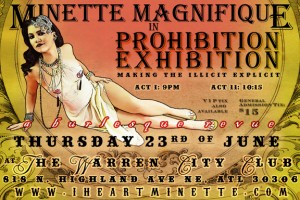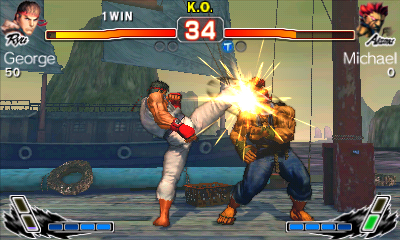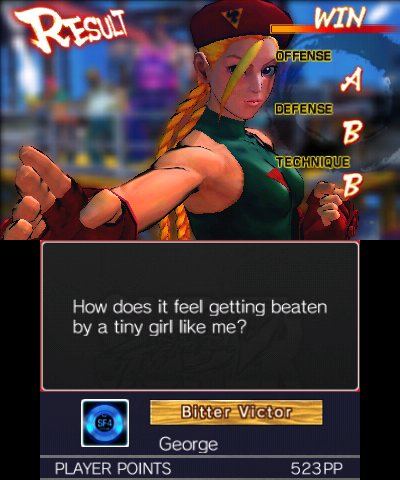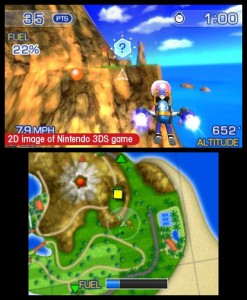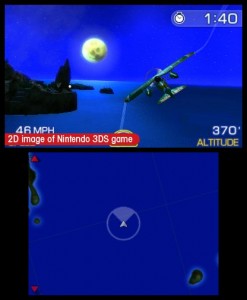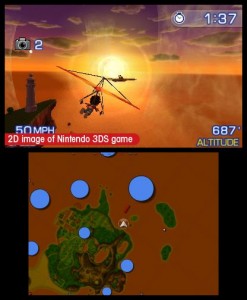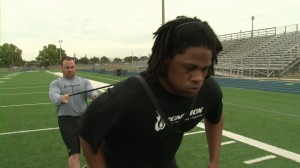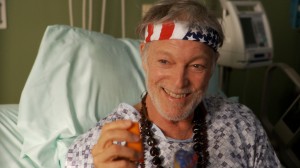By Jonathan Williams
After studying under renowned photographer Harry Callahan at the Rhode Island School of Design in the ’60s, Chip Simone developed his own unique style of black-and-white street photography over the course of the next few decades. A longtime Atlanta resident, Simone made the switch to color images in 2000, after also embracing digital photography technology. Over the next decade, Simone explored the streets of Atlanta (as well as his home state of Massachusetts and elsewhere), capturing people (ranging from ordinary to eccentric) and moments (ranging from mundane to surreal) that might otherwise have been overlooked. This Saturday, The Resonant Image: Photographs by Chip Simone opens at the High Museum of Art with a gallery talk by Simone at 2 p.m. At a recent preview (attended by the late Callahan’s wife and muse Eleanor), Simone took a moment to talk about some of the more pop culture-inspired images in the show.
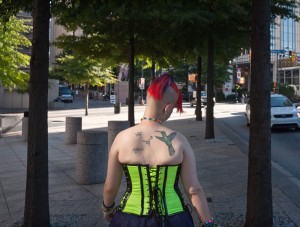
"Hummingbird Corset, Atlanta, 2010" by Chip Simone
Most of your images look like they are random glimpses at things most of us might not normally stop to look at, while others are clearly at pop culture events such as Dragon*Con. Do you seek out these moments to capture or do you take your camera everywhere you go and just happen upon things?
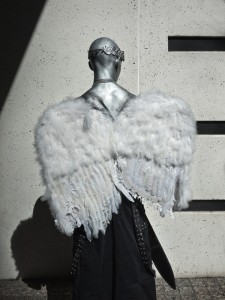
"Silver Man, Atlanta, 2010" by Chip Simone
Both. I don’t usually gravitate to events because most people at places like that go to be looked at. But I had never gone to Dragon*Con before and I found a delightful humor and spirit. When I looked at these people, they sort of look past a certain ordinariness and into something that transformed them. The guy in the “Silver Man,” he was totally that.
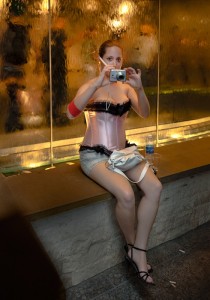
"Girl with Camera, Atlanta, 2009" by Chip Simone
And the “Girl with Camera,” that was eccentric. It was cobbled together from different ideas; she was sexy and cute and spanned a couple of different eras. This isn’t stuff that I think about at the time. Most of these pictures are done in a matter of seconds and I move on. But I can pick up things very quickly. That’s one of my good fortunes is that I can see things in people because I’ve studied drawing and taught drawing for years. I think the the best training to work with spontaneity is to have a skill set that allows you to see the essentials of any scene. And drawing forces you to do that because you have a blank slate.
What concert were you attending at the Tabernacle when you took “Red Post, Tabernacle, 2001”?
It was a bar mitzvah for my friend’s son. His son is currently hiking the Appalachian Trail. He’s several hundred miles into it and just a few days ago proposed to his girlfriend. They’re hiking all the way up to Mount Katahdin in Maine.
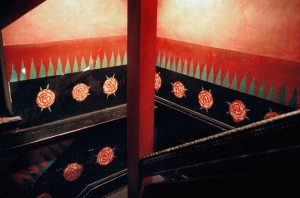
"Red Post Tabernacle, Atlanta, 2001" by Chip Simone
You were a black-and-white street photographer up until 2000, which is where this show begins. Why did you switch from black-and-white to color photography? Did that coincide with your switching from film to digital cameras?
I had worked with color film for a while. Then I got a fellowship from the National Endowment for the Arts in 1980 or something like that. I had been shooting 8 x 10 negatives for ten years up to that point. Then I got this money from the government, which encouraged me to try something new. So I got a shitload of Kodachrome because working with a big camera, you have so much control and there are so many variables, but with Kodachrome there’s no control. It’s either right or wrong. So I thought I would work under a different set of restrictions and I liked it. Kodachrome has a very narrow dynamic range, but I couldn’t print it. I couldn’t make good prints and just had problems. In the back of my mind, I remembered having had a good experience with color. But it wasn’t until the advent of digital camera technology that all the research was pointed toward increased dynamic range and stability. So I started making pictures with digital cameras, but a lot of them I didn’t print for eight years because the paper and the printers weren’t ready yet. So I was patient.
What was the most valuable thing you learned from studying under Callahan?
I studied with him in the ’60s, then I got to know him again becausae he moved to Atlanta and died here in ’99. So I had another bunch of years with him. But when I first met him I was 19 and one of Callahan’s rites of passage was that he would invite you to his house on a Friday night, where he would have people over and they’d all get shitfaced. So he told me he was having some people over and that he’d like me to come. When I got there, I wasn’t exactly comfortable in that setting because I didn’t know the protocols of all that stuff. Eleanor could sense that, so she was sitting next to me on the sofa and was telling me what I was seeing – who they were, what they were known for – and we’ve remained very good friends ever since then.
The Resonant Image: Photographs by Chip Simone. $11-$18. June 18-Nov. 6. High Museum of Art, 1280 Peachtree St. NE, Atlanta, Ga. 404-733-4400, www.high.org.
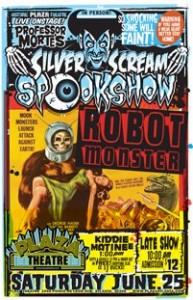 otherworldly Robot Monster, a 1953 B-movie featuring an antagonist wearing a gorilla suit and a diving helmet. Dancing girls, impossible scenarios and zany fun are never far away, especially when Spookshow host Professor Morte is involved.
otherworldly Robot Monster, a 1953 B-movie featuring an antagonist wearing a gorilla suit and a diving helmet. Dancing girls, impossible scenarios and zany fun are never far away, especially when Spookshow host Professor Morte is involved.


